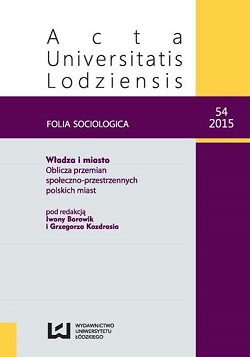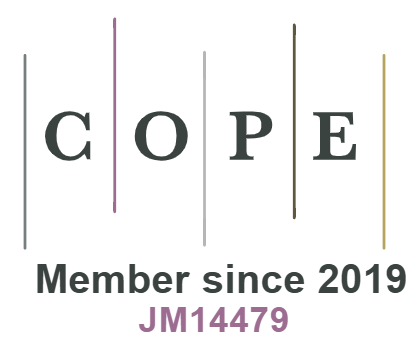A new dead district? Katowice Culture Zone in the perspective of Jane Jacobs’ urban concept
DOI:
https://doi.org/10.18778/0208-600X.54.10Keywords:
Katowice Culture Zone, revitalization, public space, Jane JacobsAbstract
The article’s main subject is the Culture Zone in Katowice – a new district established in an area of the now-closed coal mine called “Katowice”. Katowice Culture Zone consists of: a well known “Spodek” arena, recently opened The Polish National Radio Symphony Orchestra complex, International Congress Centre and new buildings of The Silesian Museum. The new buildings gained recognition and appreciation in the architects’ community. However, there are also negative opinions about the way the whole project was executed. Some critics complain about the fact of concentrating buildings of similar function in a close-by area. It has been pointed in the article that the new district was designed according to the modernist paradigm in urbanism (functional separation, loose density of buildings). There is nothing unusual about it considering past modernist influences in the city architecture. Nevertheless, the social consequences of modernistic urban planning are way more important, as it has been pointed out by the critics. A special place among them belongs to Jane Jacobs, an author of a famous book: “The Death and Life of Great American Cities”. In the article, the public space of Culture Zone in Katowice was analyzed according to Jacobs’ thesis. Several issues have been discussed: layout of buildings and streets or a functional variety. Unfortunately, conclusions of the research are not optimistic. The Culture Zone is separated from rest of the city and lacks diversity. It also suffers lack of citizens’ interest.
References
Barber B. (2014), Gdyby burmistrzowie rządzili światem. Dysfunkcyjne kraje, rozkwitające miasta, Wydawnictwo Literackie Muza SA, Warszawa.
Google Scholar
DOI: https://doi.org/10.31338/uw.9788323514206.pp.119-123
Hołdys A. (2015), Miejski mózg, „Wiedza i Życie” 6 (966), Wydawnictwo Prószyński Media, Warszawa, s. 54−59.
Google Scholar
Jacobs J. (2014), Śmierć i życie wielkich miast Ameryki, Fundacja Centrum Architektury, Warszawa.
Google Scholar
Jałowiecki B., Szczepański M. S. (2006), Miasto i przestrzeń w perspektywie socjologicznej, Wydawnictwo Naukowe SCHOLAR, Warszawa.
Google Scholar
Kozina I. (2009), Katowicka moderna – funkcjonalistyczny epizod dwudziestolecia międzywojennego w Województwie Śląskim, [w:] Oslislo Z. (red.) (2009), Katowicka Moderna 1927−1939, Wydawnictwo M-Studio, Zabrze, s. 11−29, http://opac.ciniba.edu.pl/Scripts/cgiip.exe/wo2_opbib.p?ID1=IKNMMOLGRPGJODGHFSQMK&ln=pl&RODZAJ=1&ID=455100&widok=19&N1=W15005541&N2=1&N3=19&N4=KHW&HN1=1000612211353&HN2=4&HN3=192303545615.
Google Scholar
Majer A. (2010), Socjologia i przestrzeń miejska, Wydawnictwo Naukowe PWN, Warszawa.
Google Scholar
Paszkowski Z. (2011), Miasto idealne w perspektywie europejskiej i jego związki z urbanistyką współczesną, Wydawnictwo Universitas, Kraków.
Google Scholar
Pobłocki K. (2014), Jane Jacobs – urbanistka przyziemna. Posłowie do wydania polskiego, [w:] Jacobs J. (2014), Śmierć i życie wielkich miast Ameryki, Fundacja Centrum Architektury, Warszawa, s. 459−475.
Google Scholar
Springer F. (2011), Źle urodzone. Reportaże o architekturze PRL-u, Wydawnictwo Karakter, Kraków.
Google Scholar
Downloads
Published
How to Cite
Issue
Section
License
Copyright (c) 2015 © Copyright by Piotr Czakon, Łódź 2015; © Copyright for this edition by Uniwersytet Łódzki, Łódź 201

This work is licensed under a Creative Commons Attribution-NonCommercial-NoDerivatives 4.0 International License.










